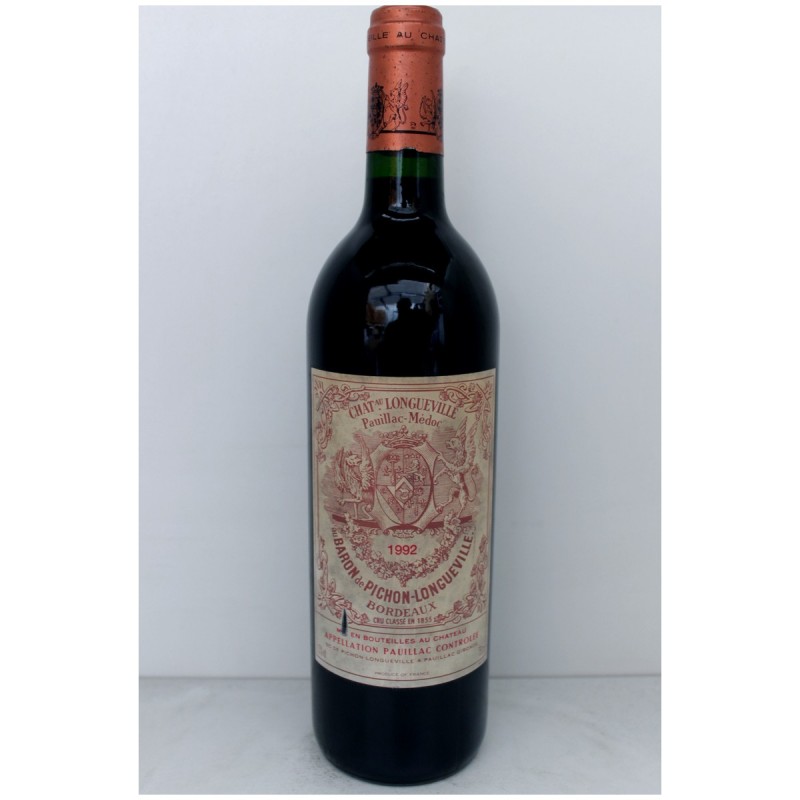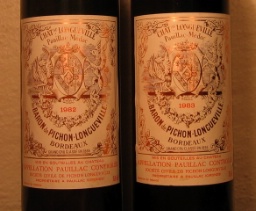

#2005 pichon baron series#
Bordering St Estèphe to the north and St Julien to the south, Pauillac has fine, deep gravel soils with important iron and marl deposits, and a subtle, softly-rolling landscape, cut by a series of small streams running into the Gironde. Yet outside the town,, there is arguably the greatest concentration of fabulous vineyards throughout all Bordeaux, including three of the five First Growths. There are no grand hotels or restaurants – with the honourable exception of the establishments owned by Jean-Michel Cazes – rather a small port and yacht harbour, and a dominant petrochemical plant. Pauillac is the aristocrat of the Médoc boasting boasting 75 percent of the region’s First Growths and with Grand Cru Classés representing 84 percent of Pauillac's production.įor a small town, surrounded by so many familiar and regal names, Pauillac imparts a slightly seedy impression. They require cellaring for at least 10 years. The best examples of Pichon-Longueville Baron have layer upon layer of unctuous, vanilla-scented, blackcurrant and cassis fruit, intermingled with cigar box and lead pencil shavings aromas. The second wine is Les Tourelles de Longueville, introduced with the 1986 vintage. The grand vin is Chateau Longueville au Baron de Pichon-Longueville. The Cabernet-dominated Pichon-Longueville Baron is a more muscular, tannic and full-bodied wine than that of its neighbour across the road, Pichon-Longueville Comtesse de Lalande. Pichon-Longueville-Baron's 73-hectare vineyard (70% Cabernet Sauvignon, 25% Merlot, and 5% Cabernet Franc, runs adjacent to that of Château Latour and lies on deep gravel beds. In 1987 it was bought by the AXA Millésimes Group, who also own Cantenac-Brown, Petit-Village, Suduiraut.ĪXA built a state of the art cuverie and chai at Pichon-Longueville Baron, while, in 2000, Christian Seely took over from Jean-Michel Cazesas as general manager. Dark, full-bodied and always elegant, the wines of Château Pichon-Baron have been reinvented to represent Bordeaux in all the best possible ways.Château Pichon-Longueville Baron, a leading Pauillac 2éme Cru Classé estate, is one of Bordeaux's most illustrious "super seconds". While its Grand Vin continues to impress, the château also produces two second wines, Les Tourelles de Longueville and Les Griffons de Pichon-Baron.

The company also recruited Jean-Michel Cazes of Château Lynch-Bages as its new General Manager and Jean-René Matignon to its tasting team, leading the château in its production of classic vintages as soon as 1989. AXA immediately implemented a major restoration, and updated the winemaking environment by introducing leading-edge technology, including satellite imagery, to the property. Lacking investors, Pichon-Baron experienced an uninspired stretch during the 60s and 70s, but had an impressive comeback after its 1987 acquisition by the AXA Insurance Group. Baron Raoul de Pichon Longueville oversaw both estates for several years until they were permanently divided, and the Pichon-Longueville family retained management until 1933, when the property was sold to the Bouteiller family who owned the château for the next 50 years. In contrast to Pichon-Lalande’s soft, fruity, rich Merlot-driven wines, Pichon-Baron presents a more assertive, masculine style dominated by Cabernet Sauvignon.

While Pichon-Lalande has historically enjoyed a reputation for its femininity, Pichon-Baron is a testament to the opposite. Dividing the estate equally among his three daughters and two sons, the Baron set the course for the subsequent emergence of Pichon-Lalande, run by his daughter, Virginie de Lalande, and its sister château, Pichon-Baron, which landed under the direction of her two brothers. Originally part of Pauillac’s impressive Pichon Longueville estate, Pichon Longueville-Baron, or Pichon-Baron, came into its own after the death of its long-time manager, Baron Joseph de Pichon Longueville.


 0 kommentar(er)
0 kommentar(er)
